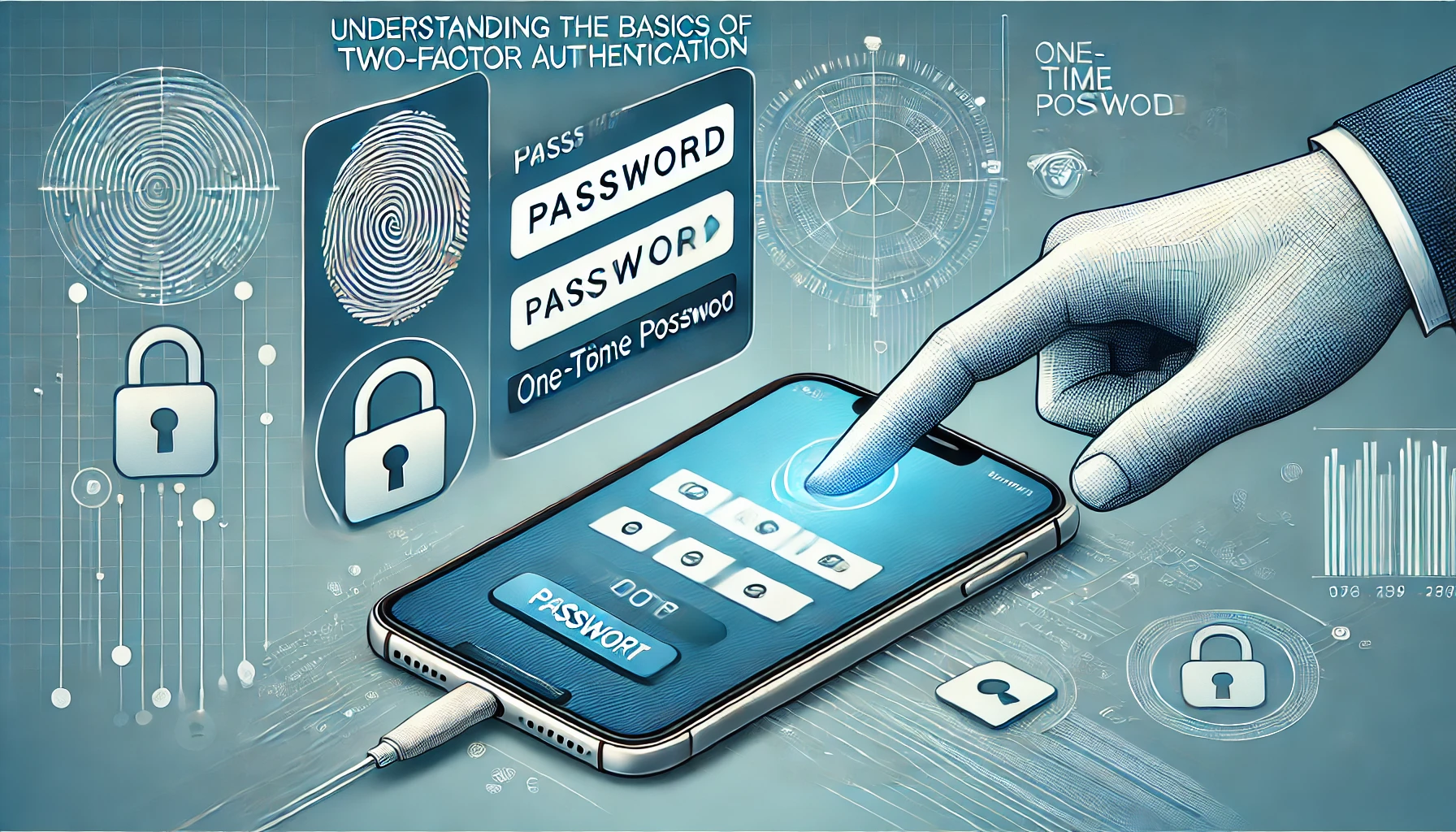Two-Factor Authentication (2FA) has emerged as a critical security measure to safeguard user accounts in today’s digital landscape. As cyberattacks continue to evolve, relying solely on passwords is no longer sufficient!

Businesses and online marketplaces must implement robust authentication protocols to protect their customers and maintain trust, especially as sensitive personal and financial data are increasingly stored online.
According to industry experts, adding a second layer of authentication can drastically reduce the risk of unauthorized access.
Implementing 2FA involves integrating additional steps such as SMS-based verification codes, authentication apps, security keys, or even biometric verification methods to verify a user’s identity.
By fortifying your login systems with robust security measures, you not only shield your user base but also bolster your brand reputation.
With the global surge in remote work and digital transactions, ensuring that your platform offers top-tier security is no longer a luxury but a competitive necessity.
As your marketplace grows and evolves, consider the broader ecosystem of trust-building measures—embracing building trust in the digital age: why data transparency matters in online marketplaces can complement your 2FA strategies to create a secure, transparent environment.
Table of Contents
- Understanding the Basics of Two-Factor Authentication
- Preparing Your Infrastructure for Two-Factor Implementation
- Challenges in Implementing 2FA and How to Overcome Them
- Case Studies: Real-Life Marketplace Successes with 2FA
- Innovations, Evolving Strategies, and Future Predictions
- Comparing Methods: A Quick Overview
- Ensuring Smooth User Experience and Communication
- Long-Term Maintenance and Scalability of 2FA Systems
- Conclusion
- Related Articles
- Yclas Resources
- References
Understanding the Basics of Two-Factor Authentication
Two-Factor Authentication (2FA) significantly increases account security by requiring two distinct factors before granting access.

As marketplaces continue to diversify, the shift toward more secure verification is part of a larger trend in strengthening overall user protection.
This shift parallels other strategic enhancements to online marketplaces, such as how value-added services can revolutionize your online marketplace strategy, illustrating that improving user experience and trust involves multiple, interconnected efforts.
Common 2FA factors include:
- Something you know: Passwords, PINs
- Something you have: Phones, hardware keys
- Something you are: Biometrics like fingerprints or facial recognition
With 81% of data breaches linked to weak or stolen passwords, reinforcing your security stack with 2FA is essential.
The end goal isn’t just security; it’s about nurturing an environment where users feel safe, akin to adopting more holistic practices like greening your marketplace: how sustainability partnerships drive growth to foster brand loyalty and trust.
Tip #1: offer multiple 2fa methods to cater to user preferences—sms, authenticator apps, and hardware tokens—ensuring smooth adoption and minimal friction.
Preparing Your Infrastructure for Two-Factor Implementation
Introducing 2FA to your platform requires careful planning. Beyond technical integration, consider how you will educate your user base.

A well-prepared rollout can align seamlessly with other marketplace enhancements (for example such as leveraging localized growth strategies found in unlocking local potential: mastering geo-targeted ads for classified websites). Both secure authentication and targeted marketing efforts help establish trust and user satisfaction.
Key steps:
- Assess current authentication systems.
- Evaluate providers (Authy, Google Authenticator, Duo).
- Pilot test on a small user group.
- Train support staff to handle queries.
- Communicate changes clearly to users.
Tip #2: start your 2fa rollout with a high-risk user segment. by focusing on power sellers or administrative staff first, you fine-tune your approach before scaling up.
Challenges in Implementing 2FA and How to Overcome Them
While 2FA bolsters security, challenges arise. Users may find extra steps cumbersome, and lost devices can hinder access.

Yet, just as you’d address spam and fraud head-on through strategies like those in the article guard your online marketplace: top spam prevention strategies, you can mitigate 2FA issues with careful planning.
Common challenges:
- User friction and resistance to change.
- Lost or stolen devices complicating logins.
- SMS vulnerabilities (intercepted messages).
- Integrating multiple device types.
Solutions:
- Educate users via tutorials and FAQs.
- Provide backup codes and alternative methods.
- Consider app-based or biometric factors for better security.
- Roll out gradually and explain the benefits clearly.
Tip #3: always have a fallback option (email or backup codes) for users who lose access to their primary 2fa device, ensuring they aren’t locked out indefinitely.
Case Studies: Real-Life Marketplace Successes with 2FA
Implementing 2FA reduces fraud, boosts user trust, and encourages engagement.

These improvements parallel the broader transformation strategies seen in the importance of verified user profiles in classified websites, where verifying identities builds credibility and user confidence.
Case Study 1: Etsy
- Introduced optional 2FA.
- Increased actual and perceived platform security.
Case Study 2: Freelancer.com
- Implemented SMS and TOTP-based 2FA.
- Lowered account breaches, improved trust.
- Users felt safer conducting transactions.
Tip #4: highlight success stories and share metrics with users to reassure them of the tangible benefits of 2fa.
Innovations, Evolving Strategies, and Future Predictions
2FA aligns with a broader trend of marketplace evolution.

Just as marketplaces explore models outlined in monetizing success: proven tips for introducing paid advertising in your marketplace, authentication methods are evolving into passwordless logins and context-aware security.
Emerging trends:
- Passwordless authentication with FIDO2/WebAuthn.
- Context-aware, behavior-based authentication.
- Biometrics and wearables for convenience.
Tip #5: keep an eye on emerging authentication standards and consider partnering with providers that are at the forefront of innovation.
Comparing Methods: A Quick Overview
| Method | Security Level | User Experience | Cost |
|---|---|---|---|
| SMS Codes | Moderate | Easy | Low (SMS fees) |
| Authenticator Apps (TOTP) | High | Moderate | Free or Low |
| Hardware Tokens (e.g., YubiKey) | Very High | Moderate | Higher (per device) |
| Biometric Verification | Very High | Easy | Device-dependent |
When choosing your 2FA method, consider blending approaches. For example, offering authenticator apps is a cost-effective way to secure your marketplace, similar to how embracing in the article enhanced data privacy controls in classified marketplaces: a path to trust and security can be a strategic investment in long-term brand integrity.
Tip #6: consider offering at least two methods—such as sms and totp apps—so users can choose what works best for them.
Ensuring Smooth User Experience and Communication
A smooth rollout demands user education.

Whether you’re improving trust through verification or introducing novel services like transform your marketplace with premium seller memberships in online marketplaces, transparent communication eases transitions.
Strategies:
- Provide step-by-step guides and FAQs.
- Offer incentives for early adopters of 2FA.
- Highlight security benefits at registration.
Just as integrating social commerce and engagement tactics—such as those in boost engagement and sales: how to integrate social commerce in your marketplace platform—can improve the user experience, so can effective communication about security measures.
Tip #7: reinforce the security benefits of 2fa during onboarding and account setup. A well-informed user is more likely to adopt and appreciate extra security measures.
Long-Term Maintenance and Scalability of 2FA Systems
2FA needs ongoing attention. Periodically audit and refine your approach, just as you would revisit your marketplace’s structure and monetization models.

Consider approaches from from free to fee: how to create a winning subscription model for your marketplace when scaling your authentication plans.
Long-term considerations:
- Regular audits and user feedback loops.
- Staying updated with security patches.
- Adapting to regional factors as your marketplace expands.
- Integrating with compliance frameworks like the secure transparent compliant gdpr ccpa playbook classified online marketplaces.
Tip #8: continually revisit your authentication strategy—what works today might need an upgrade tomorrow to counter evolving threats.
Conclusion
By implementing Two-Factor Authentication, you secure a crucial layer of defense, reducing unauthorized access and strengthening user trust.
This proactive measure complements broader marketplace enhancements.
Fore more information on other online marketplace enhancements, consider offering specialized services highlighted in unlocking premium potential: value-added services for subscription-based marketplaces or fostering vibrant communities as shown in more than listings: transforming your niche marketplace into a connected community.
When combined with innovative strategies and transparent user experiences, 2FA becomes one of many tools that differentiate your platform in a competitive market.
Looking to create an online marketplace? Contact us at Yclas.
Related Articles
- Building Trust In The Digital Age: Why Data Transparency Matters In Online Marketplaces
- How Value-Added Services Can Revolutionize Your Online Marketplace Strategy
- Greening Your Marketplace: How Sustainability Partnerships Drive Growth
- Unlocking Local Potential: Mastering Geo-Targeted Ads for Classified Websites
- Monetizing Success: Proven Tips for Introducing Paid Advertising in Your Marketplace
- The Importance of Verified User Profiles in Classified Websites
- Enhanced Data Privacy Controls in Classified Marketplaces: A Path to Trust and Security
- Monetizing Success: Proven Tips for Introducing Paid Advertising in Your Marketplace
- Transform Your Marketplace with Premium Seller Memberships in Online Marketplaces
- Harnessing Revenue Streams: The Strategic Power of Sponsored Listings in Online Marketplaces
Yclas Resources
- Create a Website
- Software Development Services
- SEO Services
- Pricing for Online Marketplaces
- Contact Us
References
- Microsoft Security Blog
- Google Security Blog
- Duo Labs
- Auth0 Security Report
- Etsy Engineering Blog
- Freelancer.com Security
- Verizon Data Breach Investigations Report
- Ponemon Institute
Frequently Asked Questions
What is Two-Factor Authentication (2FA)?
It’s a security measure that requires two forms of identification, such as a password and a one-time code, to access an account.
Why is 2FA important for online marketplaces?
It significantly reduces the risk of unauthorized access, building trust and protecting sensitive user data.
What are the common methods of 2FA?
Common methods include SMS codes, authenticator apps, hardware security keys, and biometric authentication like fingerprints.
Can 2FA completely protect against cyberattacks?
While 2FA greatly enhances security, it doesn’t make accounts completely immune; it should be part of a broader security strategy.
Which 2FA method is the most secure?
Hardware security keys and biometric authentication are considered the most secure due to their resistance to phishing and interception.
What should I do if I lose my 2FA device?
Use backup codes, recovery emails, or alternative authentication methods provided by your platform to regain access.
Will 2FA slow down the login process?
No, modern 2FA solutions are quick and user-friendly, adding only a minimal step to the process.
How can I encourage users to adopt 2FA?
Educate users on its benefits, provide clear setup guides, and offer multiple 2FA options for convenience.
Are SMS-based codes still safe for 2FA?
They offer basic protection but are vulnerable to SIM-swapping attacks; authenticator apps or hardware keys are more secure alternatives.
Is 2FA mandatory for all users?
It depends on the platform, but it’s often mandatory for high-risk accounts or sensitive transactions.

